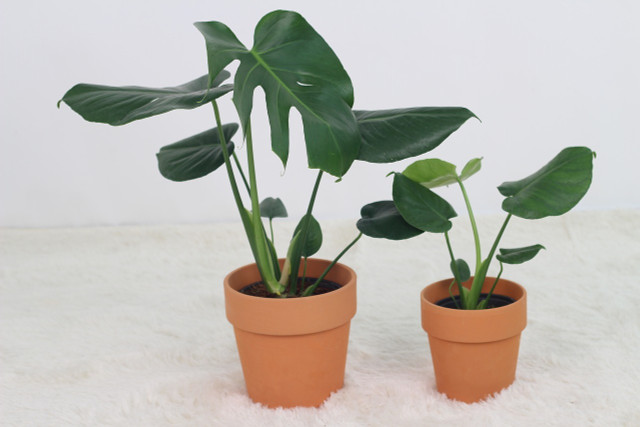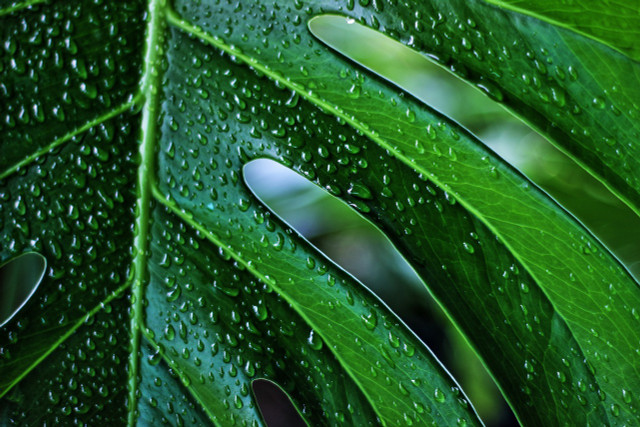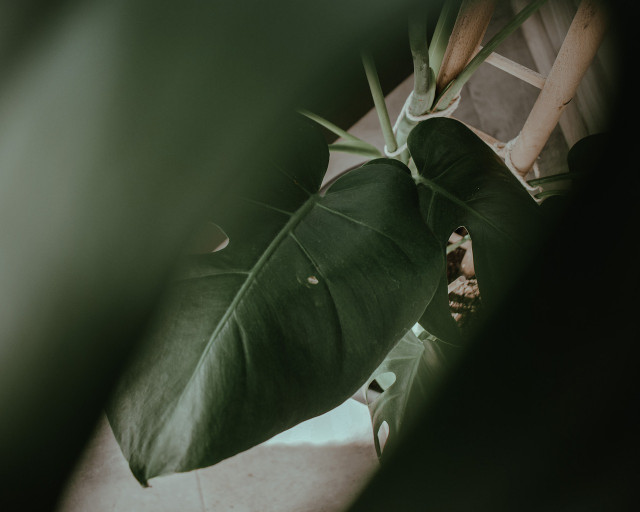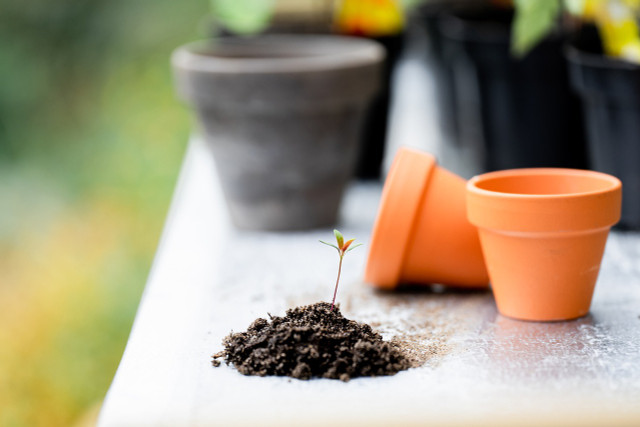Overwatering your Monstera can hurt and even kill it. Watch out for these signs to identify an overwatered Monstera and, if needed, follow our steps to bring your plant back to life.

(Foto: CC0 / Pixabay / sodamtree)
Of course, you should avoid both watering too frequently and watering in too large of quantities. But you might not immediately recognize when you’ve overwatered your Monstera plant. When Monsteras get too saturated with water, their roots cannot access needed oxygen and nutrients. This can lead to root rot, which will eventually kill your plant. Catch the signs of overwatering early to prevent root rot and keep your Monstera happy and healthy.
Signs Your Monstera is Overwatered



(Foto: CC0 / Pixabay / Clarko1959)
- Droopy and wilted leaves may be a sign that your Monstera is overwatered. Over-saturation of water can cut off oxygen supply so that plants can’t transport water and nutrients throughout the stem and leaves as needed. It can be difficult to tell what the problem is from droopy and wilted leaves alone, as this may also be a sign of an under-watered plant. Check for further symptoms and consider your watering habits to discern if overwatering is the problem.
- Stunted growth in a previously strong and quickly growing Monstera may mean it is overwatered.
- Yellowed leaves are a strong predictor that your Monstera is overwatered, especially if your plant has been in the same spot for a while and did not have this issue previously. If new growth leaves are quickly yellowing and even dropping off, your plant is probably overwatered.
- Dark spots on leaves typically follow yellowed leaves if the overwatering continues. These brown spots may even signal root rot or soggy soil.
- Water drops on leaves, known as edema, is a definite sign of overwatering. Your Monstera will produce water droplets on the tips and edges of its leaves in an attempt to get rid of excess moisture.
- Soggy soil is another red flag. If your Monstera does not have proper drainage and ventilation, it may take up to a week for the soil to dry out. This is far from ideal. A healthy Monstera plant should take only a few days to drink up. If your plant’s soil is perpetually soggy, you should probably water your plant much less and consider repotting it as well.
- Mold on the top layer of your Monstera’s soil is a clear sign of overwatering. Fungi can appear white, gray or green, and sometimes grows on the stems of the plant as well.
- Smelly, gooey roots mean your plant is experiencing root rot. This must be dealt with immediately.
How to Fix an Overwatered Monstera Plant



(Foto: CC0 / Pixabay / 20750684)
- Carefully take the Monstera out of its pot.
- Remove as much soil from the roots as you can, in order to get a close look. Healthy roots should be white or light tan colored.
- If the roots are healthy looking, you can return the Monstera to its pot and simply wait for the soil to dry out.
- You must repot your plant if the roots are brown, smelly or mushy or if the soil is soggy or moldy.
- If the soil is soggy or moldy, you must change it out. If there is fungus in the soil, it cannot be reused for other plants and must be disposed of. If you want to use the same pot for replanting, make sure to wash the pot with hot water and mild soap to prevent another infection.
- If the roots are smelly, or slimy and mushy, your plant probably has root rot. You must remove the rotten parts before replanting. Carefully cut away rotten pieces of the roots, while avoiding the white/tan portions.
- Replant in fresh, dry soil. Make sure you use a clean pot with drainage holes. Put a saucer under the pot to collect excess water. Remember to pour the excess water away after watering, to prevent over-saturation.
How to Continue Caring for Your Monstera Plant



(Foto: CC0 / Pixabay / Ylanite)
Monstera plants require indirect sunlight, proper ventilation, humidity, and careful watering.
- Do not place your Monstera in direct sunlight. These plants thrive in indirect sunlight.
- Monsteras are home to humid environments. If you use a heater or air conditioner in your home, the environment may be too dry for your plant. You can compensate for this by watering slightly more.
- Water your Monstera only when the soil is dry. Check the soil by sticking your finger about two inches in. If these top inches are dry, feel free to replenish. Usually this will be about once per week.
- Use pots with drainage holes, and throw out the excess water within ten minutes of watering.
- Consider practicing bottom watering. This means adding water to the saucer or outer pot, so that the plant’s roots can soak up what it needs from the bottom, without overwater from the top. Just make sure to check on your plant after ten minutes, and remove any water that hasn’t been soaked up.
- Keep your plants happy by opening windows at least once a day and providing fresh air and ventilation.
Read on:
- Growing Tomatoes in Pots: How to Plant Them on Your Balcony
- Keep Your Houseplants Alive: 10 Tips for Healthy Indoor Plants
- 7 Signs Of Overwatering Plants & What to Do
- How to Propagate Monstera Plants in 5 Simple Steps
Do you like this post?






